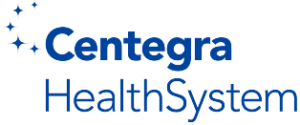
Summary of Work:
A comprehensive analysis, restructure and performance improvement engagement of Centegra Health System, a $550 million Net Patient Service Revenue community health system. Centegra had executed a letter of intent with Northwestern Medicine System. Prior to closing the transaction, Centegra was required to improve its financial and operating performance. The areas of focus are described in detail below. Within 12 months of being retained, Warbird improved the operating performance of the employed medical group, reducing operating losses by $14 million and added an additional $9 million in economic benefit to the system through restructuring of the physician group. These changes also allowed Centegra to realize additional downstream revenue that benefited the system’s operations.
Background:
The Physician Group Practice (PGP) formerly at Centegra Health (as of September 2018, now a part of the Northwest Region of Northwestern Medicine), was a 263 provider multi-specialty group, including 183 physicians, located in Northwest Illinois. Its primary service area was McHenry County. The practice was built methodically and expanded over 20 years as a subsidiary of Centegra with employed physician and provider clinic practices throughout the region. In FY 2017, PGP lost $43 million, increasing those loses to $54 million in FY 2018. In FY18, the average loss per physician was$295,000. These losses represented a significant drain on Centegra’s cash reserves. While some of PGP’s service lines were profitable to both PGP and the hospital system, most service lines failed to generate surpluses that benefited the system.
Concerns:
- The size of the annual loss was not sustainable in either the short or long terms.
- The size of the annual loss, net of economic benefits delivered to the hospital system itself, was beyond levels that the system could sustain.
- The hospital system itself was in the midst of a turnaround and had suffered a significant loss in FYs 2016 and 2017.
- PGP’s EHR system and Revenue Cycle systems and capabilities were dysfunctional and severely criticized by the physicians and other providers.
- PGP was not well structured and suffered from a broad array of management issues, both vertically and horizontally.
Areas of Focus:
This was a comprehensive assessment, reorganization and turnaround of the PGP and the broader system. All of Warbird’s capabilities were utilized to make the required changes in the limited time available:
- Revenue Cycle. Day-to-day business flow performance optimization including:
- Comprehensive assessment and implementation of revenue cycle optimization opportunities, including clinical documentation, chargemaster review, managed care contract review and enhancement, and pharmacy chargemaster review
- Business operations, particularly patient intake and process flow, including physician use of technology and the patient’s medical records
- Physician Compensation Analysis. Analysis, modeling, and restructuring of:
- Certain employment agreements and changes in the forms and consistency in compensation payments to physicians
- Changes in the RVU methodologies utilized greater reliance on standardized and expected productivity levels
- Labor Productivity Analysis. Comparative performance and analysis of:
- Changes in the ratio of support staff and providers to the physicians
- Greater emphasis on the relative productivity of the physician (both primary care and surgeons)
- Use and reporting of dashboard productivity data (real time) to managers, medical directors, and practicing physicians
- Service Line Profitability Analysis. Analysis by specialty, including focus on economic contributions to the clinic and to the delivery system
- Creation of a “consolidating” comparison financial analysis of all PGP service lines (specialties)
- Development and use of a core decision support tool to drive change and decision making at the highest levels within the system
- “All-in” analysis of the various specialties in terms of economic contributions to (1) The practice itself, and (2) the system generally
- Organizational and Management Restructuring. System-wide restructuring that included:
- Total clinical service line and workflow reorganization of all PGP’s operations, including non-clinical support
- PGP’s management and staffing practices were assessed and restructured based on a review of the number of physicians in each specialty, the ratio of support-to-physician resources, non-clinical operations staffing ratios, medical directorships, and the general management leadership structure
- Broader delivery system. Clinical and non-clinical relationships
- PGP’s broader system relationships like its use of the EHR system, effective integration into Centegra’s revenue cycle system and supply chain, and corporate overhead allocations were also reviewed and assessed.
- In many cases, inefficiencies were identified that created, on the whole, significant burdens to PGP’s financial performance.
- As one example, Warbird recommended and assisted Centegra implementing the outsourcing of the hospitalists and ED physicians to a third party. This change drove significant economic benefits to both the practice and the system
- Market Analysis and Growth. Focused analyses that targeted improving patient capture and optimizing reimbursement
- A market analysis was completed focusing on the patient market segments and capture strategies across specific PGP service lines. This resulted in:
- Changes in physician physical locations
- Policy changes regarding uncompensated care patients, including the expanded use of FQHCs
- Policy changes in payer mix and third-party insurance contracts
- Clearer definition of the Primary Service Area for accepting patients into the various clinics
- A market analysis was completed focusing on the patient market segments and capture strategies across specific PGP service lines. This resulted in:
- Analytics Optimization. Technology integration with the physician and patient experience, including performance improvement, data reporting and training:
- PGP’s EHR system grew beyond its original intended used and as a result, did not perform core and central tasks effectively
- The EHR also impacted Centegra’s revenue cycle system. As a result of the overtaxing the EHR, Centegra and the PGP’s revenue cycle system grew in dysfunction and required interim improvement and staff and physician retraining
- Prior to the Warbird engagement, there existed no viable financial or performance data for PGP. Warbird provided this capability so that PGP could operate more effectively prior to the Northwestern Medicine transaction closing
- Served as a Strategic Advisor to the Board and Management Team.
- Due to the sensitive nature and magnitude of impacts of this engagement, Warbird managed this process directly through the System’s Board of Directors with the support of the CEO
- All material recommendations and decisions regarding the practice were presented, in advance, to the Executive Committee of the Board for discussion and action
Outcomes:
- Warbird assisted Centegra in realizing a $2.35 million monthly “run rate” of performance improvement within PGP, or $23.2 million annually. These performance improvement results were $5 million greater than the original goal.
- The annual subsidy (operating loss) from the Centegra Health System was reduced from $54 million annually to $27 million annually, or approximately $180,000 per practicing clinic physician. This improvement in the annual per physician subsidy brought Centegra more in-line with MGMA reported nationwide outcomes for a similar mix of physician specialties.
- All hospitals and ED physicians were eliminated from the practice and outsourced to a 3rd
- A comprehensive consolidating financial analysis was completed by specialty (service line) to test for:
- Relative productivity of the providers
- Net contribution margins to:
- The group practice
- The hospital system
- The group practice was completely re-organized to accomplish:
- New senior management team
- Appropriate support staff-to-physician ratios
- Reduction of unnecessary overhead staff and costs
- Clinic location and staff consolidation
- Individual physician productivity and reporting accountabilities
- Reduction and consolidation of medical director management within the group practice.
- The Electronic Medical Record system was improved by eliminating unnecessary capabilities that had been added over the years including an overly complicated process of Provider-Based Billing and lab services. Improvements were limited, however, due to the impending merger with Northwestern Medicine
- The Revenue Cycle was improved in all three areas
- Patient access, medical record and patient billing services.
- Revenue Cycle improvement initiatives were tailored to enhance Centegra’s revenue cycle performance prior to its merger with Northwestern and later adoption of Northwestern’s revenue cycle systems.
Conclusion:
As a result of Warbird’s assistance, $35M in margin improvement for the entire system was realized during the first year after being retained, representing a monthly run rate of approximately $2.9M. At the beginning of year two, this monthly run rate improved to $4M in margin improvement ($48 million annually for the system overall). More specifically, the performance improvement realized in Centegra’s Physician Group Practice represented $2.35M of the total $4 million monthly run rate of margin improvements.
The margin improvements within PGP were significant enough for Northwestern Medicine to determine that Centegra’s enhanced financial and operating position was sustainable and the acquisition should be consummated.
